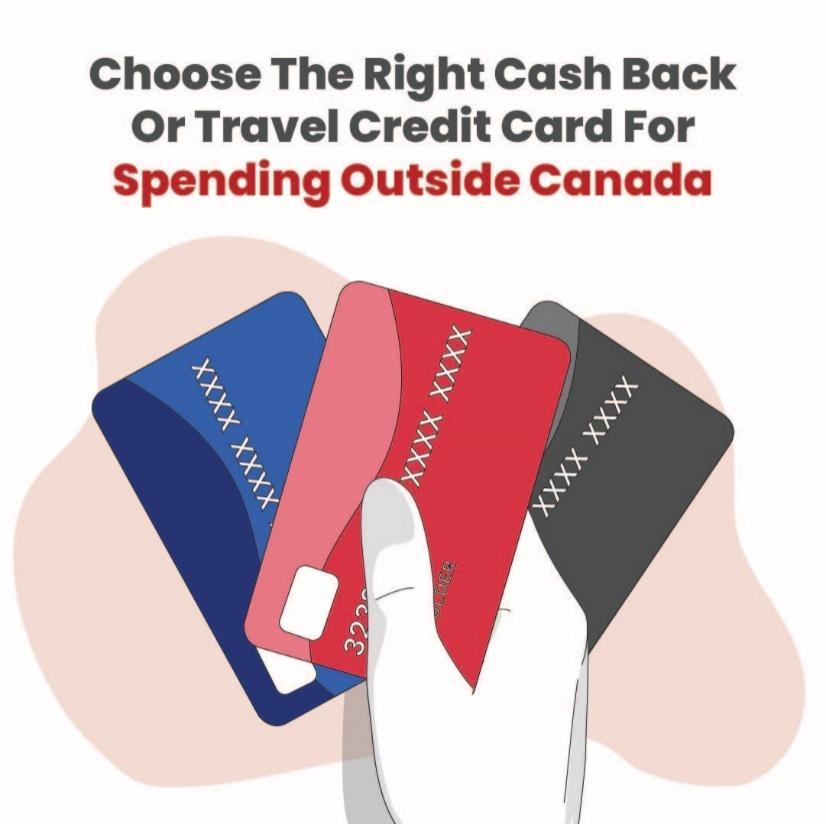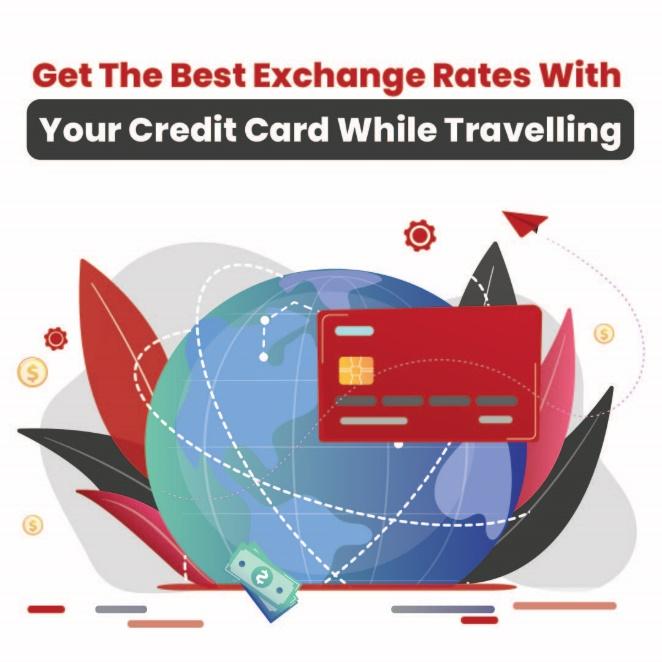Picture this: You’re sitting at a café in Paris, sipping on an espresso while watching the world pass by. You just paid for your coffee with your credit card, but what you might not realize is that you’ve probably overpaid—thanks to hidden currency conversion fees and exchange rate markups. Many Canadians unknowingly lose money on foreign transactions simply because they don’t know how to get the best exchange rates credit card when travelling abroad.
Using your credit card for international purchases is incredibly convenient, but not all credit cards are created equal when it comes to foreign exchange fees. Some come with hefty conversion charges, while others offer competitive exchange rates that can save you a surprising amount over time. If you travel frequently, knowing how to optimize your card usage can make a significant difference in how much you spend abroad.
This guide will break down how exchange rates work, why hidden fees can eat into your travel budget, and how to choose the right cash back card or travel credit card to get the best exchange rates credit card while spending outside Canada.
How Credit Card Exchange Rates Really Work
Most travellers assume that when they swipe their credit card abroad, they are simply paying the amount shown on the receipt, converted into Canadian dollars. However, the reality is a bit more complex than that, and there are several factors to consider that can impact how much you end up paying for your purchases.
When you make a foreign currency purchase, it is the credit card network, whether it is Visa, Mastercard, or American Express, that determines the exchange rate applied to your transaction. This rate is generally close to the market rate—the figure you would find on Google or other currency conversion websites. However, what many consumers do not realize is that most credit cards also charge a foreign transaction fee, which typically hovers around 2.5%. This fee is added to the conversion rate, increasing the overall cost of your purchase.
For instance, let’s say you purchase USD 100 while travelling. At a market rate of 1.32, that purchase would convert to approximately CAD 132. However, after adding the foreign transaction fee, your final cost could rise to around CAD 135. Although a few extra dollars may not seem significant at first glance, if you find yourself spending thousands of dollars during your trip, those hidden costs can accumulate rapidly, leading to a surprising increase in your overall expenses.
To mitigate these additional charges, it is essential to consider your options carefully before travelling. The goal should be to find a credit card that offers either no foreign transaction fees or a rewards system—such as cashback or travel points—that can help offset these costs. By doing so, you can maximize your spending power while abroad and avoid unnecessary fees that could detract from your travel experience.
The Hidden Costs of Foreign Transactions
Foreign transaction fees represent just one aspect of the complexities associated with using credit cards internationally. Many banks and credit card issuers impose their exchange rate markups, which often lack transparency and can ultimately diminish the value of even the top-rated cash back credit cards when utilized abroad. Understanding the pitfalls related to international transactions can save you significant money and frustration while travelling.
One of the most prevalent hidden costs is Dynamic Currency Conversion (DCC). This occurs when a merchant offers you the option to pay in your home currency—such as Canadian dollars—rather than the local currency. While this option may seem convenient at first glance, it typically comes with an inflated exchange rate that can lead to higher overall costs. Instead of accepting the charge in your home currency, always opt to be billed in the local currency. This choice can significantly reduce unnecessary fees and ensure you are charged at a more favourable rate.
Another crucial hidden cost is ATM withdrawal fees. When you use your credit card to get cash from an ATM overseas, you may be subjected to several additional charges, including cash advance fees and the interest that begins to accumulate immediately. It’s essential to be aware of these potential expenses before withdrawing cash, as they can quickly add up and lead to unexpected costs on your travel budget.
Additionally, exchange rate fluctuations can further complicate international purchases. The value of currencies can change on a daily basis, and if your card does not process transactions instantly, you might notice slight variances in the final amount charged to your account. This can confuse and potentially higher costs than anticipated, especially when converting money overseas.
While using a credit card abroad can provide convenience, being aware of these hidden costs—such as DCC, ATM withdrawal fees, and exchange rate fluctuations—can help you make more informed decisions and potentially save you money during your travels. Always research your credit card terms and choose wisely to maximize your benefits while minimizing costs.
The Best Credit Cards for Exchange Rates and Travel Savings
If you travel often, having a cash back card or travel credit card that minimizes currency conversion costs is essential. Some of the best options for Canadian travellers include:
Scotiabank Passport Visa Infinite Card
This card is one of the few Canadian credit cards that completely waives foreign transaction fees, making it an excellent choice for frequent travellers. You’ll save 2.5% on every international purchase compared to most other cards. It also comes with travel perks like Priority Pass airport lounge access and travel insurance.
American Express Cobalt Card
If you’re looking for a mix of rewards and travel benefits, the Amex cash back model on the Cobalt Card is one of the best in Canada. It offers high earn rates on dining and travel spending, allowing you to collect points that can be redeemed for flights, hotels, and other travel perks.
Each of these cards offers different benefits, so the best option depends on your spending habits. The key takeaway? If you travel often, the best exchange rates credit card should always have either no foreign transaction fees or a strong rewards program that makes up for any currency conversion costs.
Smart Spending Tips to Maximize Exchange Rates
Even with the right cash back card, there are additional ways to ensure you get the most out of every transaction while travelling.
Always Pay in the Local Currency
Merchants will often ask if you’d like to be charged in Canadian dollars instead of the local currency. While it seems like a good idea, this service comes with a high markup, making the final charge more expensive. Always opt to pay in the local currency to take advantage of your credit card’s competitive exchange rate.
Use Your Credit Card for Purchases, Not Cash Withdrawals
Withdrawing money from an ATM using your credit card can result in high fees, interest charges, and poor exchange rates. Instead, use a debit card designed for foreign transactions if you need cash.
Time Your Large Purchases
Exchange rates fluctuate daily. If you’re making a large purchase while travelling, it might be worth checking the rate over a few days to ensure you’re getting the best deal.
Leverage Cash Back and Rewards Programs
If you’re using a top rated cash back credit card, make sure you’re earning the highest rewards on travel purchases. Some cards offer boosted rewards for foreign spending, helping to offset any transaction fees.
The Bottom Line: Get More Value from Your Travel Spending
Travelling should be about creating memorable experiences, not worrying about losing money on exchange rate markups. Choosing the best exchange rate credit card can make a massive difference in how much you actually spend while exploring new destinations.

By selecting a credit card with no foreign transaction fees, avoiding unnecessary ATM withdrawals, and making strategic purchases in local currencies, you can significantly cut down on hidden costs. Whether you prefer a cash back card like the Amex cash back options or a travel rewards card that lets you earn points for your adventures, being mindful of how your credit card handles exchange rates is essential.
Before your next trip, review your current card’s foreign transaction policies and consider switching to one that aligns with your travel needs. The right credit card can turn every international purchase into a smart financial decision.
Get the Best Rewards Credit Card in Canada
Looking for the top cash back credit cards in Canada? Discover the perfect rewards credit card tailored to your needs with Great Canadian Rebates. Our online platform will help you find and compare the best Canadian cash back credit cards, travel credit cards, and more. Plus, you can earn generous cash back rebates upon approval of credit cards applied for through our website.


